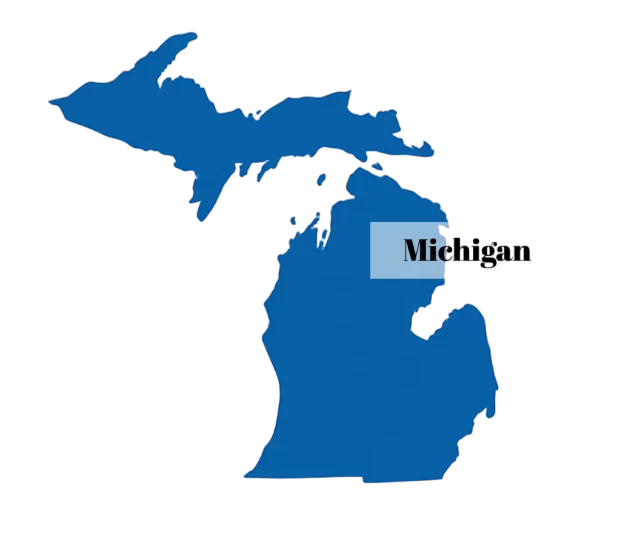Navigating the NHTD Program: A Complete Guide The Nursing Home Transition and Diversion (NHTD) program in New York State is an essential program that helps people with chronic illnesses and disabilities achieve their goal of independence. By offering necessary services, this program enables qualified participants to live in their communities as opposed to nursing homes. This post will examine the many facets of the NHTD program, such as requirements, eligibility evaluations, coverage, application procedures, and more.
Key Takeaways
- The NHTD Program provides home and community-based services for individuals with disabilities.
- Qualifications for NHTD include being eligible for Medicaid and needing a nursing home level of care.
- Assessing eligibility for NHTD involves a comprehensive assessment of an individual’s needs and functional abilities.
- NHTD coverage includes services such as personal care, skilled nursing, and home modifications.
- Applying for NHTD involves completing an application and providing documentation of medical necessity.
The NHTD program is a Medicaid-funded project designed to help people return to their communities after being in institutions. In contrast to nursing homes, it acknowledges that a large number of people would rather live at home or in a community. The program offers continuous support to help people maintain their independence in addition to assisting with transitions.
The NHTD program provides a variety of services designed to satisfy each participant’s particular requirements. Among these services are transportation, home modifications, and help with personal care. The NHTD program gives people the tools they need to live happy lives and stay involved in their communities.
Individuals must fulfill certain requirements established by New York State in order to be eligible for the NHTD program. Applicants must primarily have a documented need for long-term care services & be eligible for Medicaid. The usual method for determining this need is a thorough assessment that takes into account the person’s mental & physical capabilities. A disability or chronic illness that substantially limits an applicant’s capacity to carry out daily tasks is another requirement, as is being at least eighteen years old.
This program is intended for people who are either living in a nursing home or who are in danger of being institutionalized because of their health issues.
| Qualifications | Coverage |
|---|---|
| Diagnosis of Traumatic Brain Injury (TBI) or Nursing Home Transition and Diversion (NHTD) Waiver | Home and Community-Based Services (HCBS) |
| Assessment of need for services | Personal Care Services (PCS) |
| Meet income and resource requirements | Home Health Aide (HHA) |
| Be eligible for Medicaid | Skilled Nursing Services |
It is essential for anyone thinking about applying to the NHTD program to comprehend these requirements. A comprehensive evaluation procedure determines eligibility for the NHTD program. This evaluation looks at a person’s medical history, support requirements, and functional abilities. Finding out if the person needs help with everyday living tasks like dressing, bathing, and meal preparation is the aim.
A licensed practitioner, such as a social worker or nurse, usually performs the evaluation and collects data regarding the applicant’s living circumstances & overall health. Making sure that only people who actually need help are enrolled in the program requires this procedure. It also aids in customizing services to fit each participant’s unique needs.
The NHTD program provides a broad range of services aimed at helping people in their communities & homes. Help with personal care tasks, such as bathing and grooming, is one of these services. In order to improve accessibility, the program also offers home modifications like grab bars and ramps. Another essential element of the NHTD program is transportation, which allows participants to go to social events or medical appointments. Additional services could include skills training to encourage independence, assistive technology, & respite care for family caregivers.
To prevent processing delays, it is crucial to make sure that all information is correct and comprehensive. Following submission, candidates will get in touch for an evaluation to ascertain their program eligibility. The NHTD program application process necessitates meticulous organization and attention to detail. Following submission of the application, candidates should monitor all communications from the organization & promptly reply to inquiries for more details.
Keeping lines of communication open with caseworkers or care managers assigned to the application is also advantageous. These experts can offer direction during the procedure and assist in resolving any issues that might come up. The likelihood of a successful application can be greatly increased by being proactive & knowledgeable. Medical necessity documentation is a crucial part of the NHTD program application process.
Evidence that a person needs long-term care services because of their health condition is provided by this documentation. Usually, it contains medical records, evaluations from medical professionals, and any pertinent diagnostic data. It is recommended that applicants collaborate closely with their healthcare providers to guarantee that all required documentation is comprehensive and appropriately reflects their requirements. This step is essential since it has a direct bearing on NHTD program eligibility decisions & service approvals. Care managers are essential to the NHTD program because they act as coordinators and advocates for participants.
Following program enrollment, a care manager is tasked with regularly evaluating the needs of the individual & making sure they receive the right services. Care managers connect participants with community resources, organize services, and assist them in navigating the intricacies of the healthcare system. In addition, they track developments and modify care plans as necessary. A committed care manager can make a big difference in a person’s experience in the NHTD program.
To guarantee that people obtain the coverage they require through the NHTD program, advocacy is a crucial component. In order to effectively communicate their needs and concerns to care managers and service providers, participants and their families should take the initiative. It’s critical to speak up for oneself or seek support from advocacy groups that focus on disability rights if coverage is refused or access to services is difficult. When handling disagreements over coverage or service delivery, these groups can offer helpful resources and assistance. People may occasionally run into issues with the NHTD program’s coverage decisions or service denials. For participants looking for a resolution, knowing how to handle grievances & appeals is essential.
People have the right to challenge decisions made regarding the denial of a service request or problems with service delivery. Usually, the appeal procedure entails sending in a written request with supporting documentation that explains the reasons for disagreement. Following up on appeals and meeting deadlines are crucial to ensuring they are handled quickly.
Although navigating the NHTD program can be challenging, there are many resources available to help people and families along the way. Local advocacy groups frequently offer advice on the services that are available, the application procedures, & the eligibility requirements. Also, state resources like the website of the New York State Department of Health provide thorough details about the NHTD program, including the contact details of care managers and local offices. Making use of these resources can enable people to make well-informed choices regarding their care options. — To sum up, people seeking independence while managing disabilities or chronic illnesses can be greatly impacted by comprehending and utilizing the NHTD program. Rockaway Home Care has more than 20 years of experience providing high-quality home care services, & through initiatives like NHTD, it is prepared to help those who require assistance.
Our caring staff, based in New York, is committed to assisting clients in obtaining necessary services that improve their quality of life and advance their well-being. For help with home care services or if you or a loved one are thinking about applying for the NHTD program, get in touch with Rockaway Home Care right now!
In addition to understanding the qualifications and coverage of the Nursing Home Transition and Diversion (NHTD) program, it’s essential to consider the broader spectrum of care options available for seniors. An insightful article that complements this topic is 24-Hour Homecare, which explores the benefits and logistics of providing round-the-clock care for seniors in the comfort of their own homes. This article provides valuable information on how continuous home care can be a viable alternative or supplement to programs like NHTD, ensuring that seniors receive the comprehensive support they need.
FAQs
What is NHTD?
NHTD stands for Nursing Home Transition and Diversion. It is a Medicaid program designed to help individuals who are eligible for nursing home level of care to transition back to the community or divert them from entering a nursing home.
Who qualifies for NHTD?
To qualify for NHTD, individuals must be eligible for Medicaid and require a nursing home level of care. They must also be willing and able to transition back to the community with the appropriate supports in place.
What does NHTD cover?
NHTD covers a range of services and supports to help individuals transition back to the community or divert them from entering a nursing home. This may include home and community-based services, assistive technology, environmental modifications, and more. The specific services covered may vary depending on individual needs and the state’s Medicaid program.




